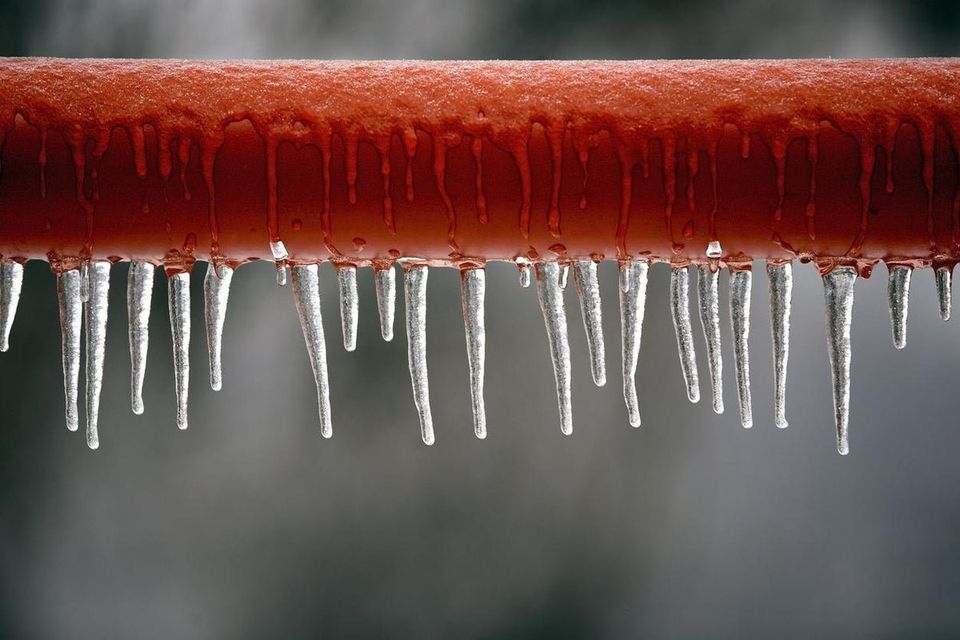Protecting Pipes from Cold Weather Damage: Essential Tips
Protecting Pipes from Cold Weather Damage: Essential Tips
Blog Article
What're your thoughts about Prevent Frozen Pipes ?

Cold weather can wreak havoc on your plumbing, particularly by freezing pipelines. Here's exactly how to avoid it from occurring and what to do if it does.
Introduction
As temperatures decrease, the danger of icy pipelines boosts, potentially causing pricey fixings and water damage. Comprehending just how to stop icy pipes is crucial for home owners in cool environments.
Prevention Tips
Protecting vulnerable pipelines
Cover pipes in insulation sleeves or make use of warmth tape to safeguard them from freezing temperatures. Focus on pipes in unheated or outside locations of the home.
Home heating techniques
Keep interior spaces adequately heated, particularly locations with pipes. Open up cupboard doors to enable warm air to circulate around pipes under sinks.
Just how to recognize frozen pipelines
Try to find decreased water flow from taps, unusual smells or noises from pipelines, and visible frost on revealed pipes.
Long-Term Solutions
Structural modifications
Take into consideration rerouting pipelines away from exterior wall surfaces or unheated locations. Include added insulation to attic rooms, cellars, and crawl spaces.
Updating insulation
Purchase premium insulation for pipes, attics, and wall surfaces. Proper insulation aids preserve regular temperature levels and minimizes the risk of icy pipelines.
Safeguarding Exterior Pipes
Yard tubes and outdoor faucets
Disconnect and drain garden hose pipes before wintertime. Mount frost-proof spigots or cover outside taps with shielded caps.
Understanding Icy Pipes
What triggers pipes to ice up?
Pipelines freeze when subjected to temperature levels listed below 32 ° F (0 ° C) for prolonged durations. As water inside the pipelines ices up, it increases, putting pressure on the pipe walls and potentially causing them to break.
Dangers and problems
Icy pipelines can cause water system disturbances, building damage, and costly repairs. Ruptured pipelines can flood homes and cause substantial structural damage.
Indicators of Frozen Piping
Recognizing frozen pipelines early can stop them from bursting.
What to Do If Your Pipes Freeze
Immediate actions to take
If you believe icy pipelines, keep taps open to relieve pressure as the ice thaws. Utilize a hairdryer or towels taken in warm water to thaw pipelines gradually.
Final thought
Stopping icy pipes needs aggressive actions and quick feedbacks. By recognizing the causes, indications, and preventive measures, house owners can safeguard their plumbing throughout winter.
6 Proven Ways to Prevent Frozen Pipes and Protect Your Home
Disconnect and Drain Garden Hoses
Before winter arrives, start by disconnecting your garden hoses and draining any remaining water. Close the shut-off valves that supply outdoor hose bibs and leave the outdoor faucet open to allow any residual water to drain. For extra protection, consider using faucet covers throughout the colder months. It’s also important to drain water from any sprinkler supply lines following the manufacturer’s directions.
Insulate Exposed Pipes
Insulating your pipes is an effective way to prevent freezing. Pipe insulation is readily available at home improvement stores and is relatively inexpensive. Pay close attention to pipes in unheated areas such as the attic, basement, crawl spaces, or garage. Apply foam insulation generously to create a buffer against the cold. You can also wrap your pipes in heat tape or thermostat-controlled heat cables for added warmth.
Seal Air Leaks
Inspect your home for any cracks or openings that could let in cold air. Seal any holes around the piping in interior or exterior walls, as well as the sill plates where your home rests on its foundation. Additionally, make sure to keep your garage door closed unless you’re entering or exiting. Leaving it open creates a significant air leak that can lead to frozen pipes.
Allow Warm Air Circulation
During cold snaps, it’s essential to allow warm air to circulate evenly throughout your home. Leave interior doors ajar to promote better airflow. Open kitchen and bathroom cabinets to help distribute heat consistently around the rooms. If you have small children or pets, be sure to remove any household chemicals or potentially harmful cleaners from open cabinets for safety.
Let Faucets Drip
A small trickle of water can make a big difference in preventing ice formation inside your pipes. When temperatures drop significantly, start a drip of water from all faucets served by exposed pipes. This continuous flow helps prevent the water from freezing. Additionally, running a few faucets slightly can relieve pressure inside the pipes, reducing the chances of a rupture if the water inside does freeze.
https://choateshvac.com/6-proven-ways-to-prevent-frozen-pipes-and-protect-your-home/

We were guided to that write-up on Winter Plumbing Precautions: Preventing Frozen Pipes from someone on another website. If you enjoyed reading our post kindly remember to share it. We thank you for reading our article about Helpful Tips to Prevent Frozen Pipes this Winter.
Schedule Now! Report this page